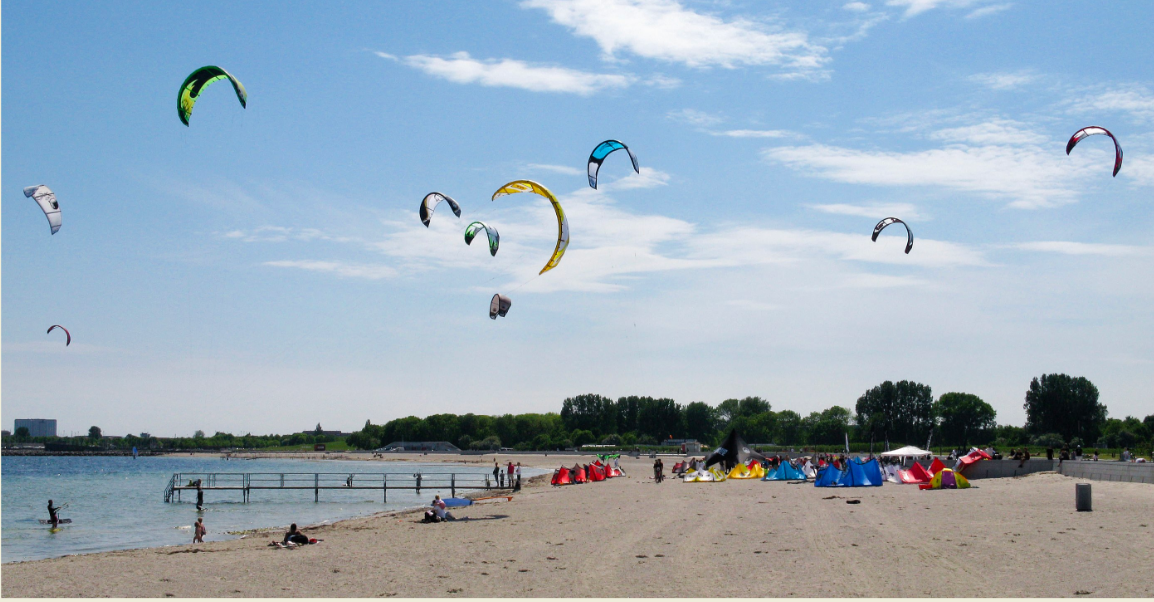

The central area of the city consists of relatively low-lying flat ground formed by moraines from the last ice age while the hilly areas to the north and west frequently rise to 50 m (160 ft) above sea level. The slopes of Valby and Brønshøj reach heights of over 30 m (98 ft), divided by valleys running from the northeast to the southwest. Close to the centre are the Copenhagen lakes of Sortedams Sø, Peblinge Sø and Sankt Jørgens Sø.
Geologically Copenhagen lies in the northern part of Denmark where the land is rising because of post-glacial rebound.
Amager Strandpark, which opened in 2005, is a 2 km (1 mi) long artificial island, with a total of 4.6 km (2.9 mi) of beaches. It is located just 15 minutes by bicycle or a few minutes by metro from the city centre. In Klampenborg, about 10 kilometers from downtown Copenhagen, is Bellevue Beach. It is 700 metres (2,300 ft) long and has both lifeguards and freshwater showers on the beach.
The beaches are supplemented by a system of Harbour Baths along the Copenhagen waterfront. The first and most popular of these is located at Islands Brygge and has won international acclaim for its design.
Copenhagen is in the oceanic climate zone (Köppen: Cfb ). Its weather is subject to low-pressure systems from the Atlantic which result in unstable conditions throughout the year. Apart from slightly higher rainfall from July to September, precipitation is moderate. While snowfall occurs mainly from late December to early March, there can also be rain, with average temperatures around the freezing point.
June is the sunniest month of the year with an average of about eight hours of sunshine a day. July is the warmest month with an average daytime high of 21 °C. By contrast, the average hours of sunshine are less than two per day in November and only one and a half per day from December to February. In the spring, it gets warmer again with four to six hours of sunshine per day from March to May. February is the driest month of the year.